
Iconoclastic British fashion designer Dame Vivienne Westwood, who rose to prominence during the punk movement of the 1970s and has remained an anarchic presence in fashion since, has died aged 81.
Announced yesterday evening (29 December 2022), Westwood died peacefully surrounded by friends and family in her home in Clapham, South London. Andreas Kronthaler, Westwood’s husband and creative partner, paid tribute: ‘I will continue with Vivienne in my heart. We have been working until the end and she has given me plenty of things to get on with. Thank you darling.’
Westwood continued to ‘do the things she loved up until the last moment, designing, working on her art, writing her book, and changing the world,’ the statement continued. It also noted that Westwood considered herself a Taoist, an ancient Chinese philosophy which encourages harmony with the universe.
Dame Vivienne Westwood dies aged 81
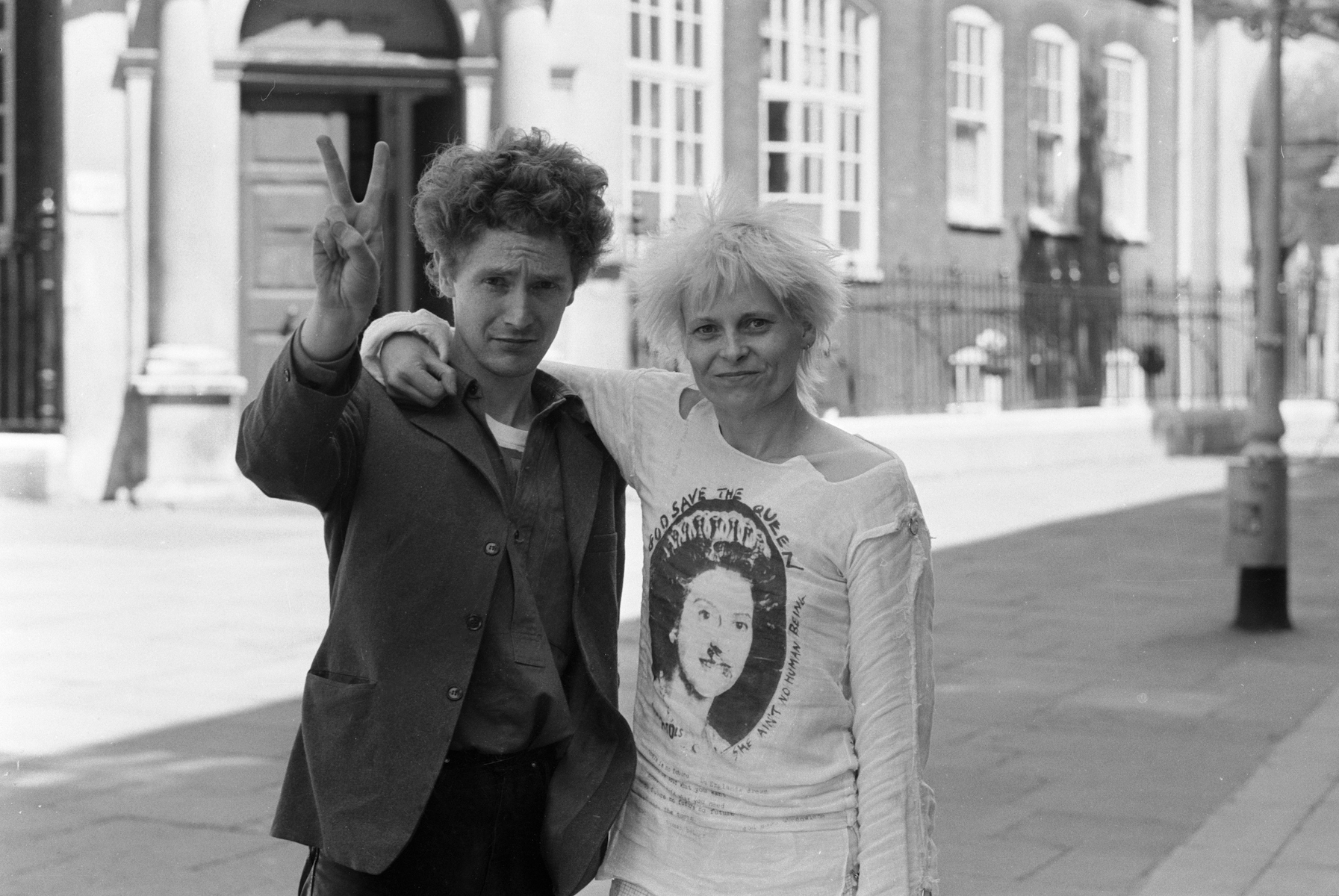
Vivienne Westwood with Malcolm McLaren in 1977
‘There was never more need for the Tao than today,’ Westwood is quoted as previously saying. ’Tao gives you a feeling that you belong to the cosmos and gives purpose to your life; it gives you such a sense of identity and strength to know you’re living the life you can live and therefore ought to be living: make full use of your character and full use of your life on Earth.’
Westwood was born Vivienne Isabel Swire in 1941 in the small village of Tintwistle, Derbyshire, before moving to the north London suburb of Harrow with her family in 1957. She briefly attended Harrow Art School, dropping out after a term to attend secretarial college and later become a teacher. She married Derek Westwood in 1962 and gave birth to her first child Benjamin Westwood in 1963, though they split not long afterwards.
It was while working as a primary school teacher that Westwood met then-art student Malcolm McLaren – a music impresario who went on to manage the Sex Pistols – in a relationship that would prove formative. Part of London’s burgeoning punk movement, they opened the boutique Let It Rock at 430 King’s Road in 1971, selling vintage memorabilia and clothing. It would undergo various iterations in the following years – Too Fast To Live Too Young To Die, SEX, Seditionaries and finally Worlds End – incorporating Westwood and McLaren’s own designs, which often featured provocative slogans and DIY construction. Other pieces were inspired by fetish wear.
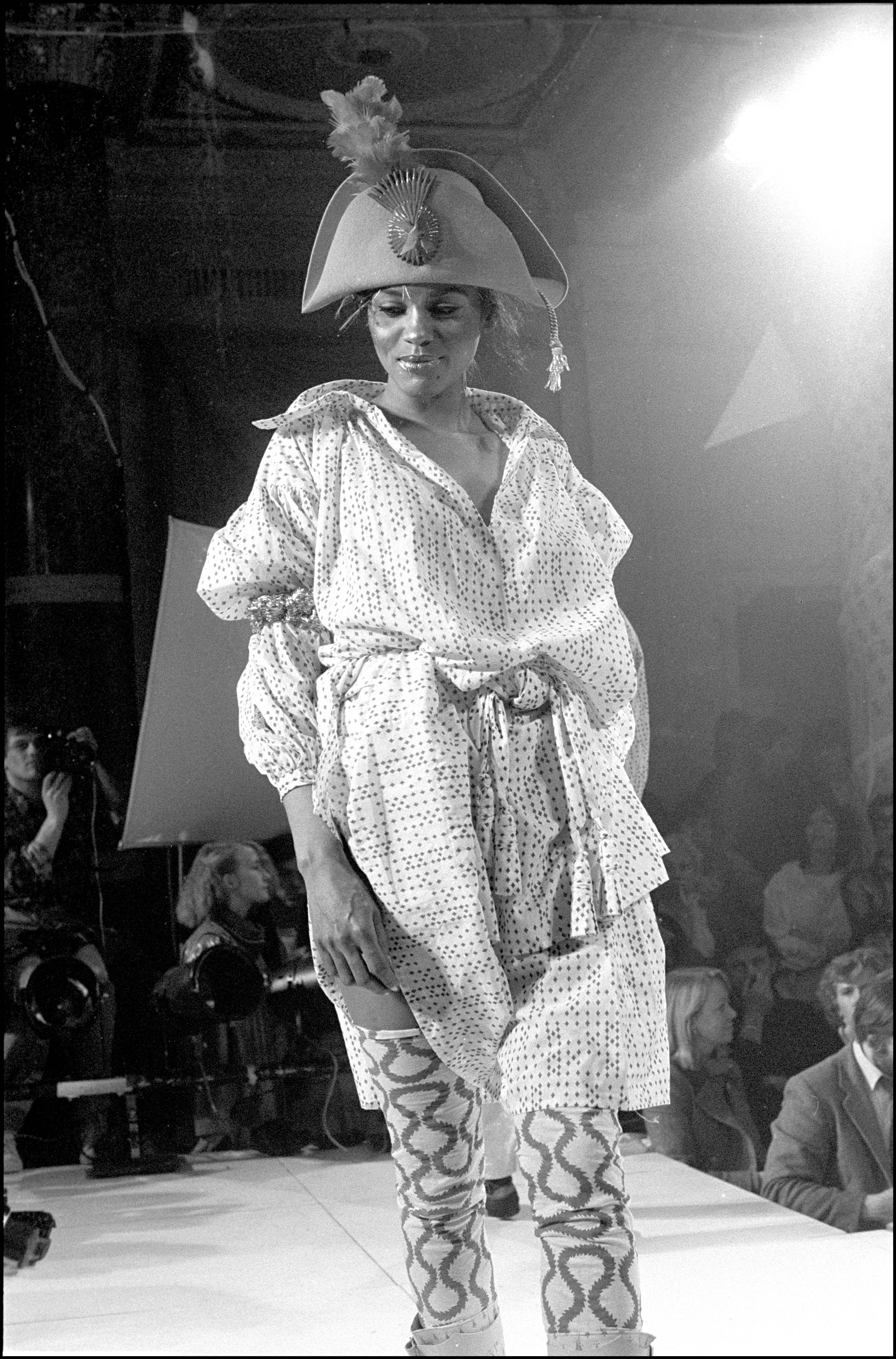
Vivienne Westwood and Malcolm McLaren’s ‘Pirates’ collection in 1981
In 1981, Westwood and McLaren staged their first runway show ‘Pirates’, which marked a shift from punk and ushered in the New Romantics era (Adam Ant had drafted McLaren for a rebrand not long earlier; several of the designs came from outfits created for the musician). Drawing inspiration from historical portraiture of the 17th and 18th centuries, romantic flourishes – bell sleeves, pirate hats, sashes and powdered wigs – met the anarchic spirit of their previous work with studded and tattered elements.
Receive our daily digest of inspiration, escapism and design stories from around the world direct to your inbox.
Such a dichotomy continued to run through Westwood’s collections throughout her career (the partnership with McLaren was dissolved in the mid-1980s). In 1985, she introduced the ‘mini crini’ – a thigh-grazing riff on historical crinolines – and later reintroduced the corset, worn exposed, in 1987 (versions of the corset have appeared in Westwood collections ever since). Such inspirations were oftentimes drawn from a collection of artists she particularly admired – Jean-Honoré Fragonard, François Boucher and Thomas Gainsborough – noting her particular fondness for London’s The Wallace Collection gallery and its Rococo portraiture.
Tropes of traditional British dress would also be an inspiration point for the designer, most famously in her evocation of tartan. Presented in Paris, Westwood’s A/W 1993 collection was titled Anglomania and featured ‘MacAndreas’ tartan – named after husband Kronthaler – across a collection that the designer said was about English tailoring and ‘country charm’ through a French lens.
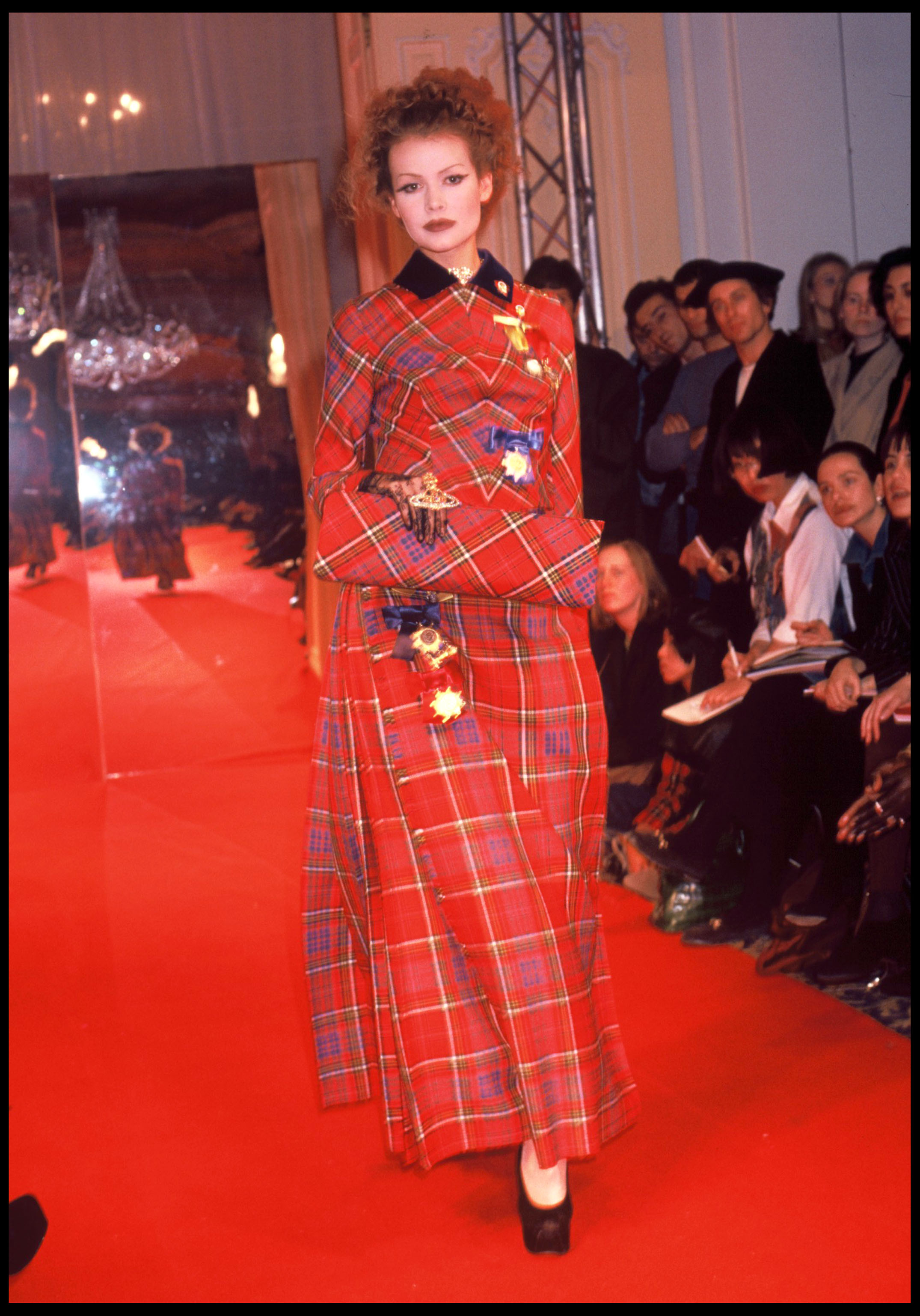
Vivienne Westwood A/W 1993 ‘Anglomania’ collection
‘On the English side we have tailoring and an easy charm, on the French side that solidity of design and proportion that comes from never being satisfied because something can always be done to make it better, more refined,’ she said. The show was also notable for one of Westwood’s most notable moments, Naomi Campbell’s catwalk tumble in a towering pair of ‘Elevated Ghillie’ heels.
Throughout the 1990s and into the 2000s, Westwood would become one of British fashion’s most notable exports. In 1996, Vivienne Westwood MAN launched with a show in Milan; in 1998, Anglomania became its own diffusion line; while boutiques opened worldwide, from New York to Tokyo. In 2004, Westwood was celebrated with an exhibition at London’s V&A Museum titled ‘Vivienne Westwood: 34 Years in Fashion’, which was then the largest-ever exhibition dedicated to a British designer. Having been made an Officer of the Order of the British Empire (OBE) in 1992, she was late made a Dame in 2006.
Westwood remained an avid activist throughout her life, pioneering ethical and sustainable production with her collections, and supporting numerous causes, NGOs and charities – from Greenpeace to the Humane Society International, which attempts to prevent sales of fur in the UK. In 2012 at the London Paralympics closing ceremony, she began Climate Revolution which aims to unite various organisations in the pursuit of preserving the planet for generations ahead. ‘I want you to help me save the world, I can’t do it on my own,’ she said.
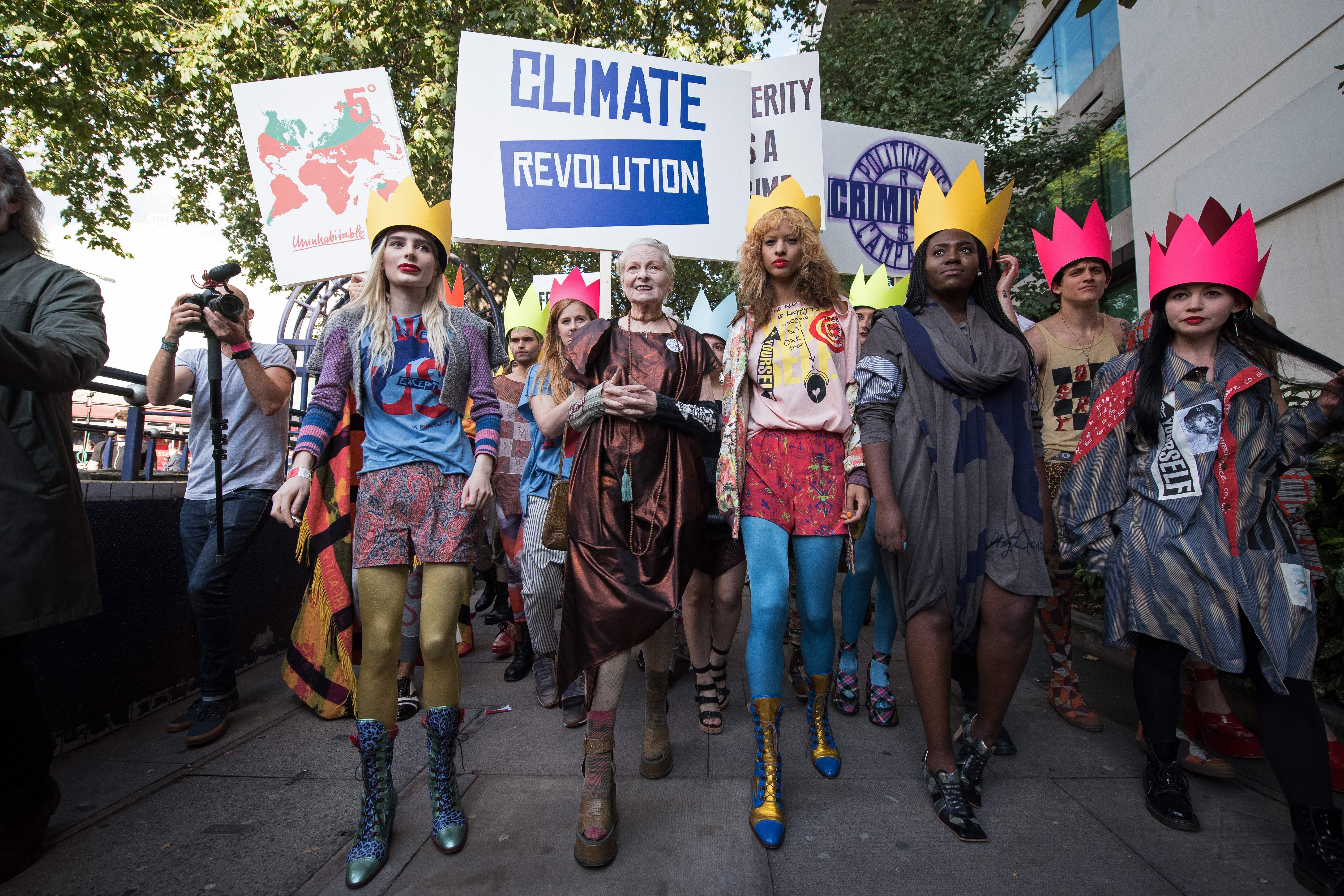
Vivienne Westwood at a demonstration ahead of her S/S 2016 show
Later in life, she took an increasingly anti-establishment approach, denouncing over-consumption and capitalism – which she called ‘the root of war, climate change and corruption’ – and taking part in numerous protests. One particular cause was support for WikiLeaks founder Julian Assange. Dressing as a yellow ‘canary’ she stood in a cage outside the Old Bailey court in 2020, protesting against Assange’s extradition from Britain to the United States.
These pursuits will continue with the advent of The Vivienne Foundation, announced yesterday, which will run under four pillars – climate change, stop war, defend human rights, and protest capitalism.
Kronthaler, who took over the Gold Label in 2016 – since renamed ‘Andreas Kronthaler for Vivienne Westwood’ – will continue to show collections seasonally in Paris. ‘Vivienne still has the same bite and energy,’ he told The Guardian in 2021, ’although just a little slower. But I still rely on her totally: she’s the only person I trust to say when something is good, the only adviser and guide I can follow.
’She [articulates] ideas I’ve not even had yet. About fashion, yes, but more than that: a way to look at life.’
Jack Moss is the Fashion & Beauty Features Director at Wallpaper*, having joined the team in 2022 as Fashion Features Editor. Previously the digital features editor at AnOther and digital editor at 10 Magazine, he has also contributed to numerous international publications and featured in ‘Dazed: 32 Years Confused: The Covers’, published by Rizzoli. He is particularly interested in the moments when fashion intersects with other creative disciplines – notably art and design – as well as championing a new generation of international talent and reporting from international fashion weeks. Across his career, he has interviewed the fashion industry’s leading figures, including Rick Owens, Pieter Mulier, Jonathan Anderson, Grace Wales Bonner, Christian Lacroix, Kate Moss and Manolo Blahnik.
-
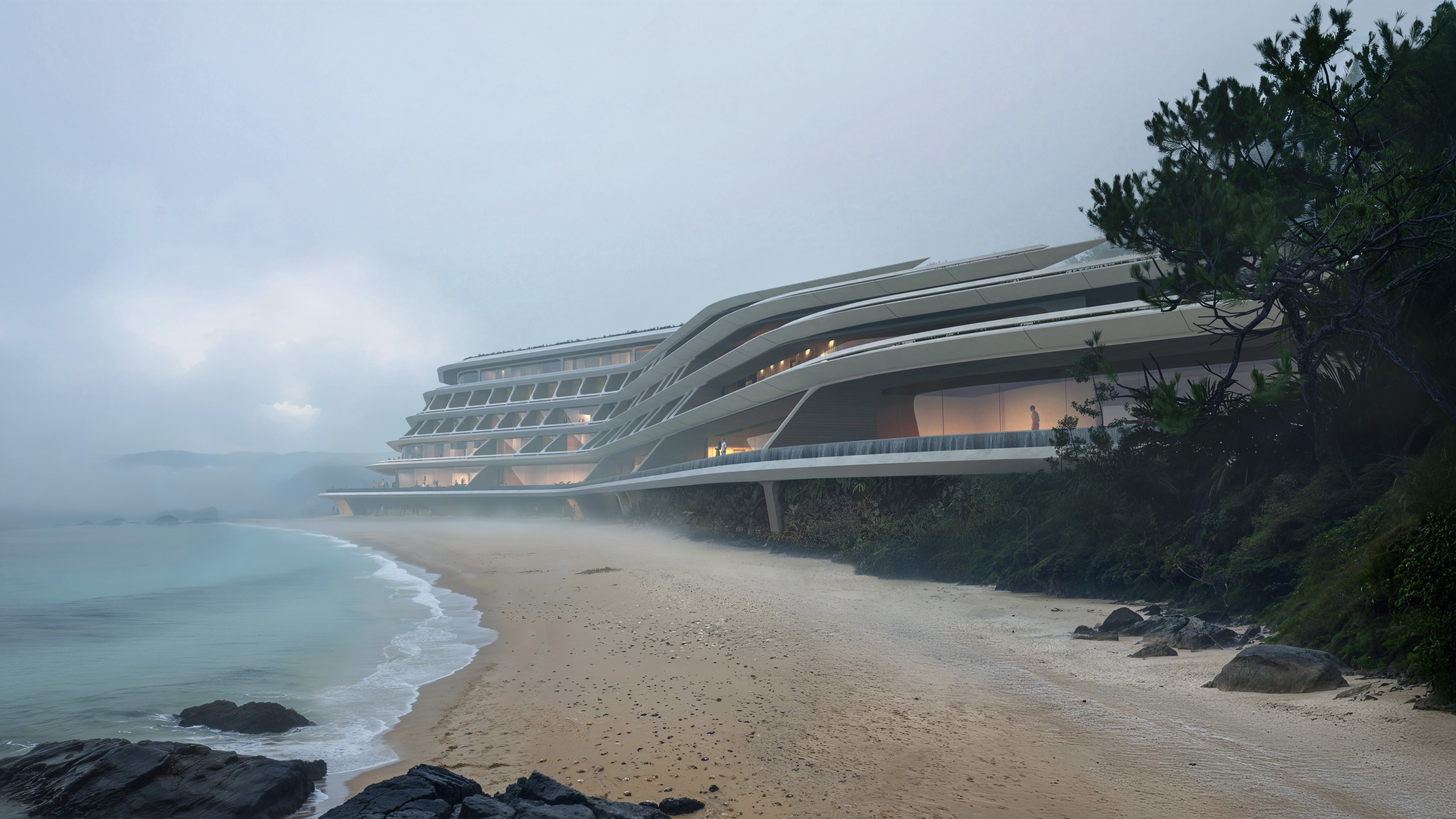 Curvilinear futurism meets subtropical beaches at Not A Hotel’s ZHA-designed Okinawa retreat
Curvilinear futurism meets subtropical beaches at Not A Hotel’s ZHA-designed Okinawa retreatZaha Hadid Architects has revealed the design for the first property in Not A Hotel’s futuristic new Vertex collection, coming soon to southern Japan
-
 Gorden Wagener leaves the helm of Mercedes-Benz design after 28 years with the company
Gorden Wagener leaves the helm of Mercedes-Benz design after 28 years with the companyThe German designer is stepping down from the role of chief design officer at Mercedes-Benz. We look back at his influence and impact on the world of automotive and luxury design
-
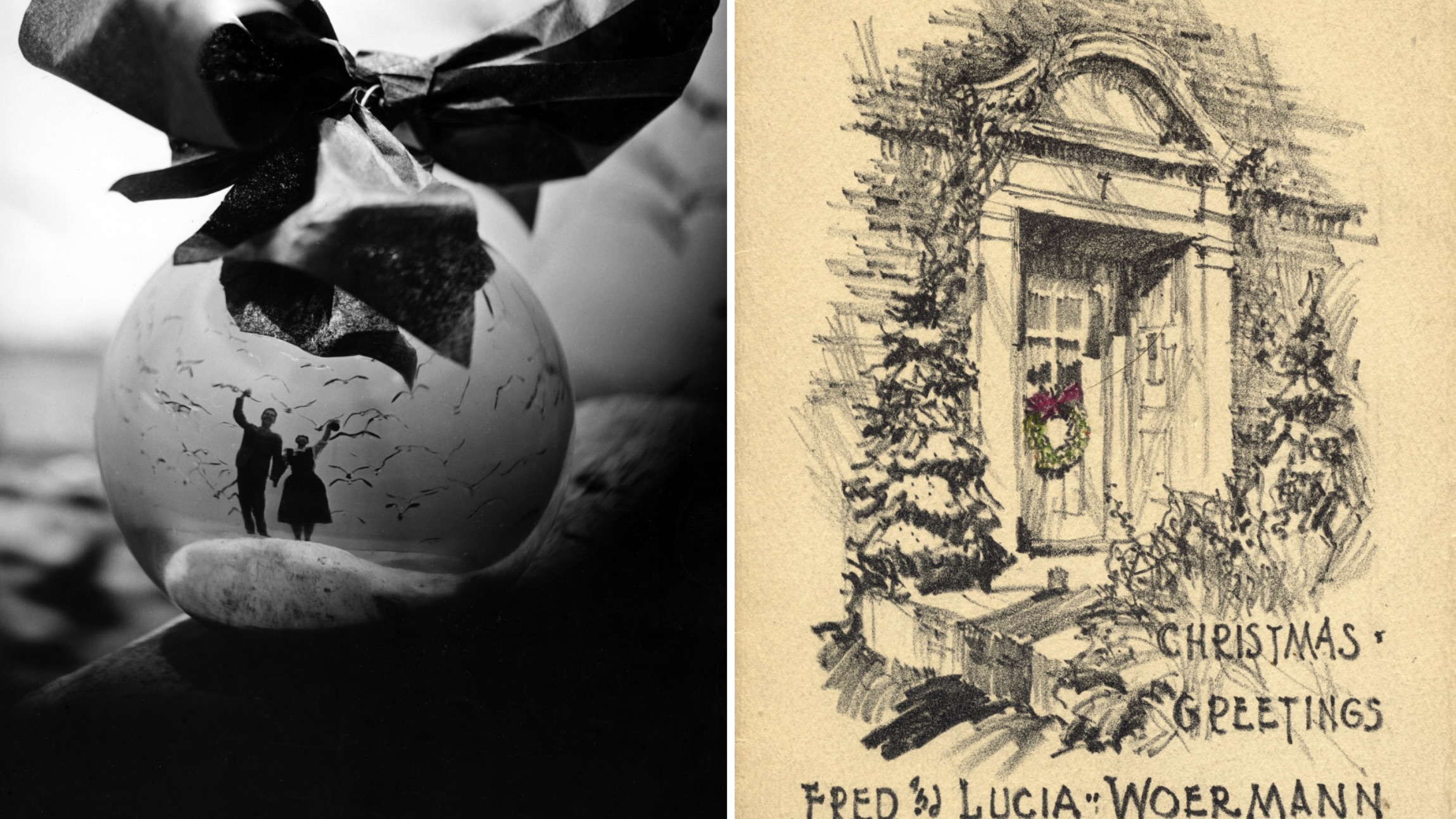 These Christmas cards sent by 20th-century architects tell their own stories
These Christmas cards sent by 20th-century architects tell their own storiesHandcrafted holiday greetings reveal the personal side of architecture and design legends such as Charles and Ray Eames, Frank Lloyd Wright and Ludwig Mies van der Rohe
-
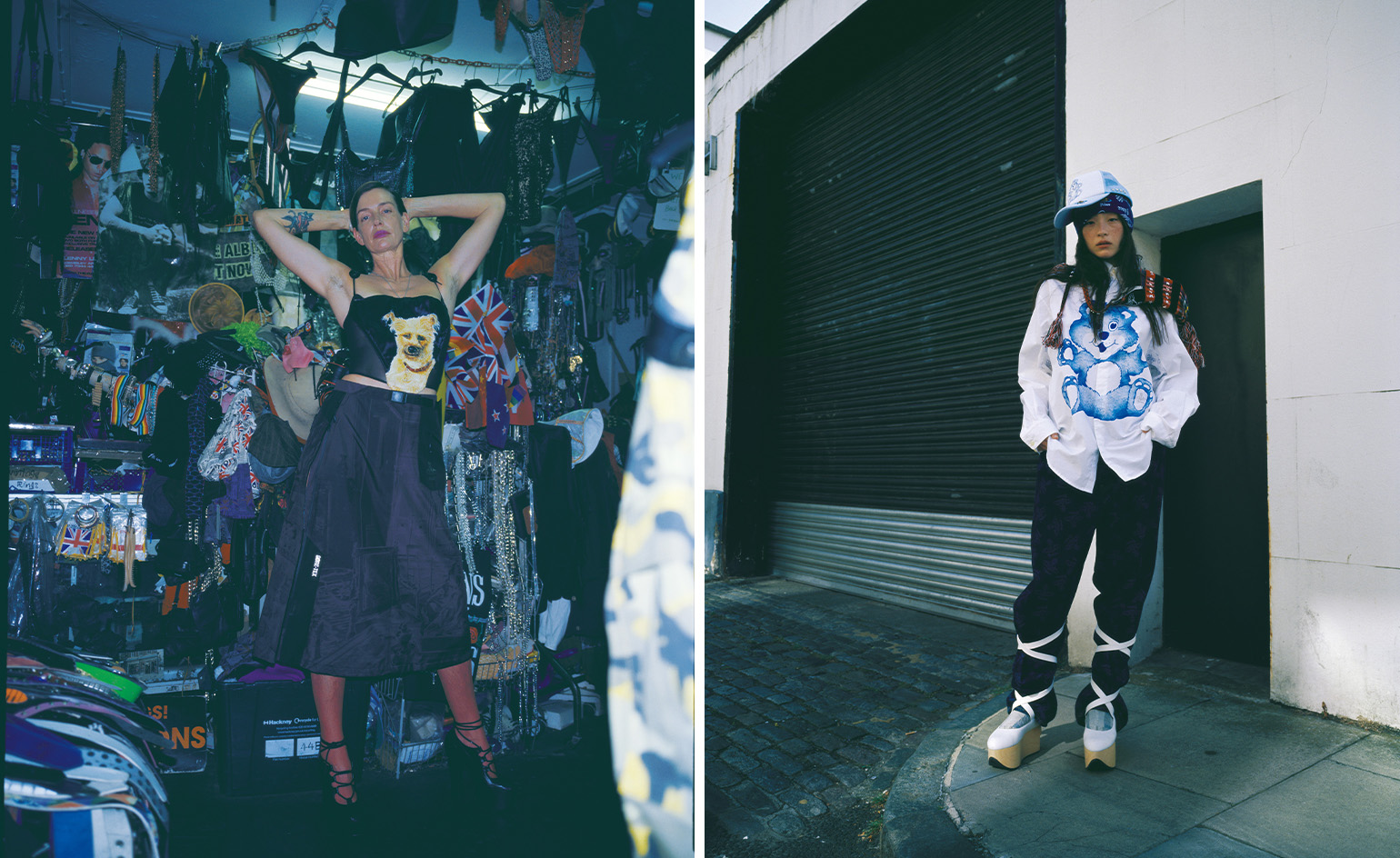 First look: Palace and Vivienne Westwood unite on collection with a ‘uniquely London twist’
First look: Palace and Vivienne Westwood unite on collection with a ‘uniquely London twist’London-based skate brand Palace has collaborated with Vivienne Westwood on a collection which celebrates their shared spirit of rebellion and independence
-
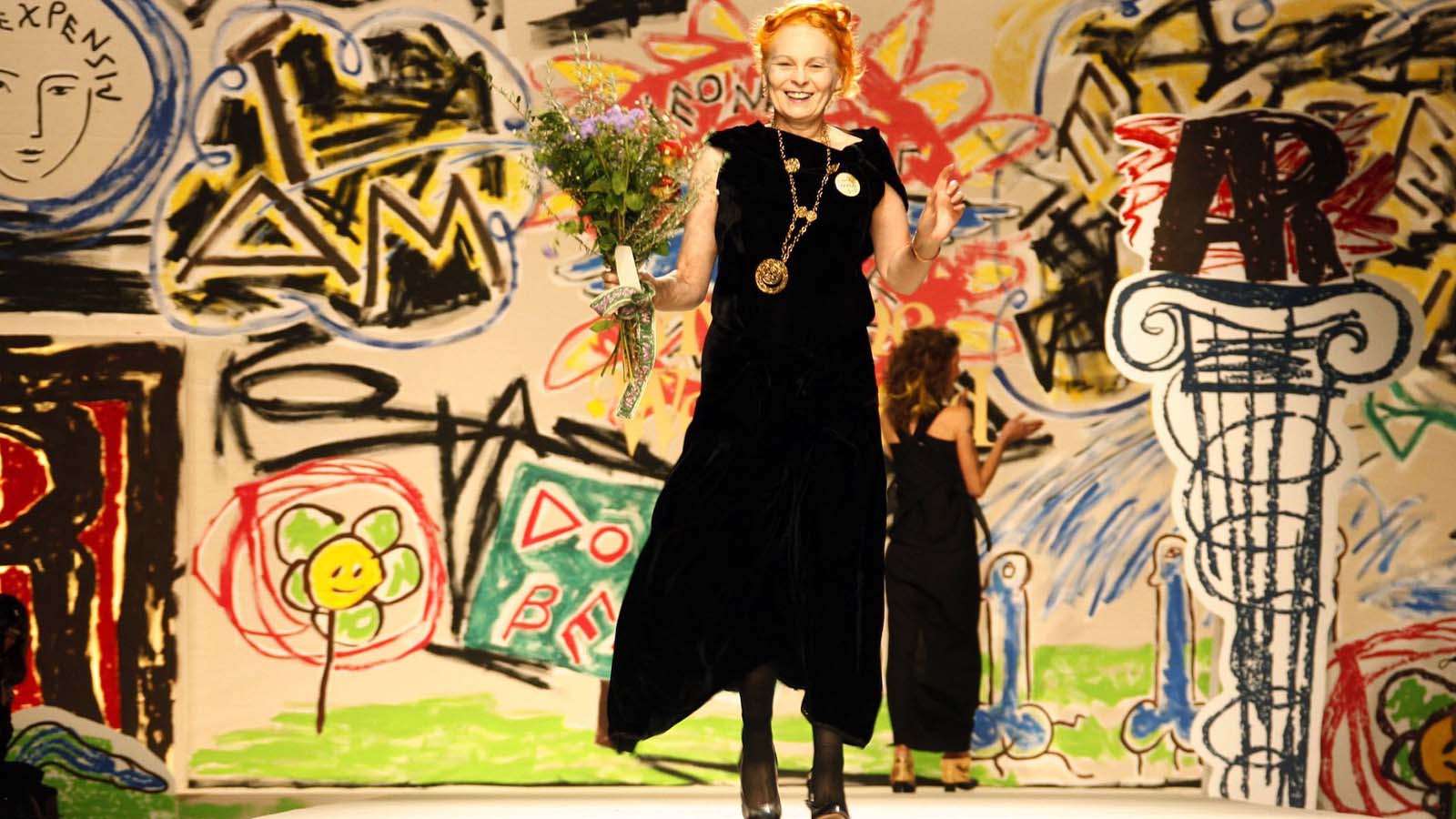 Vivienne Westwood’s personal wardrobe goes up for sale in landmark Christie’s auction
Vivienne Westwood’s personal wardrobe goes up for sale in landmark Christie’s auctionThe proceeds of ’Vivienne Westwood: The Personal Collection’, running this June, will go to the charitable causes she championed during her lifetime
-
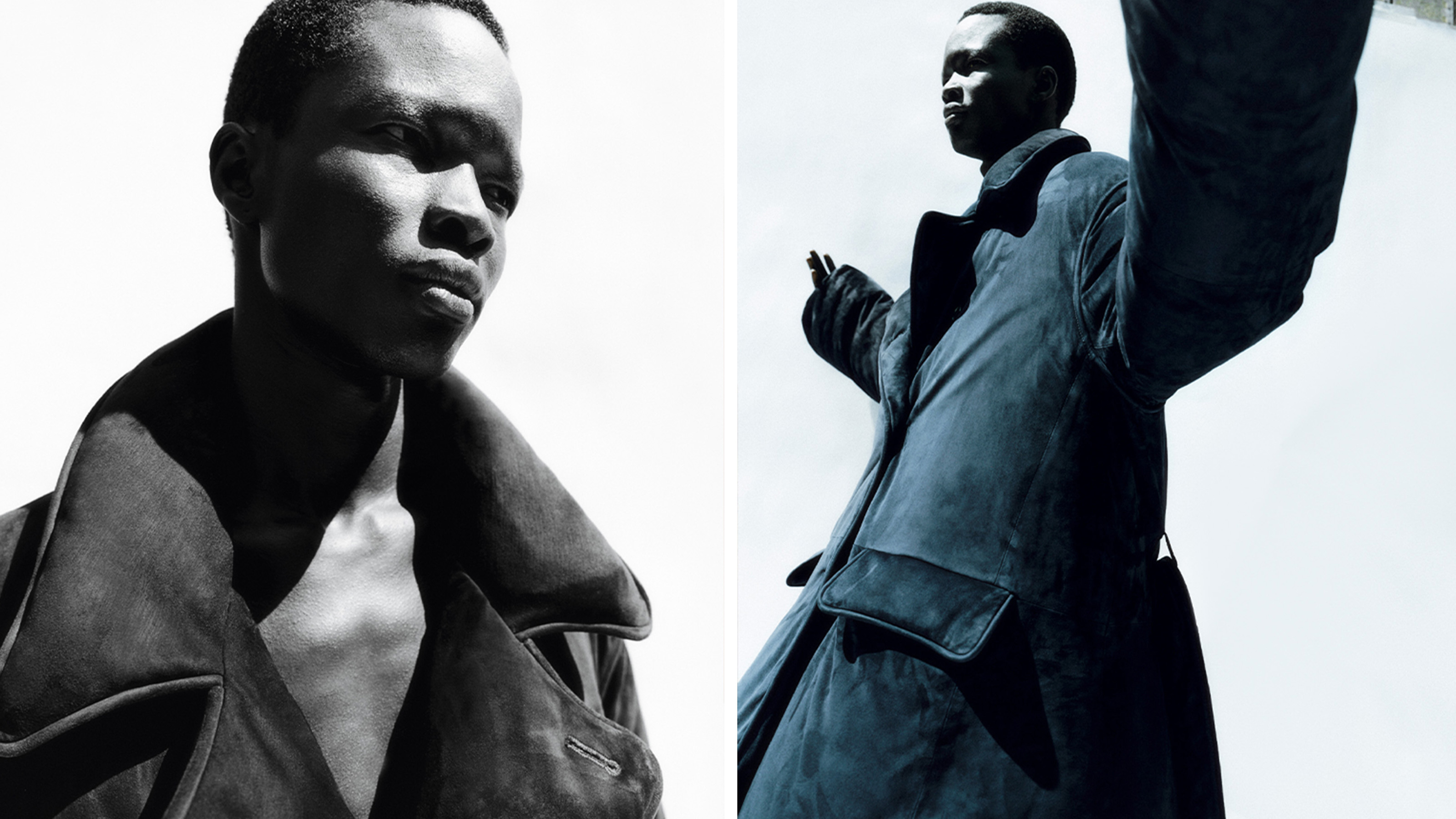 This season, men’s outerwear is defined by bold shapes and seductive textures
This season, men’s outerwear is defined by bold shapes and seductive texturesThe voluminous silhouettes of the season’s finest men’s outerwear, captured in the Wallpaper* September 2023 Style Issue by Umit Savaci and David St John James
-
 Inside the travelling exhibition celebrating 125 years of luggage brand Rimowa
Inside the travelling exhibition celebrating 125 years of luggage brand RimowaFrom celebrity suitcases to rare special editions, Rimowa’s ‘Seit 1898’ exhibition catalogues over a century of the German luggage brand, making stops in Tokyo, New York, Shanghai and Cologne
-
 Watch this La Jetée-inspired fashion film by Melanie + Ramon, captured on the streets of Paris
Watch this La Jetée-inspired fashion film by Melanie + Ramon, captured on the streets of ParisTaken alongside the Wallpaper* September 2023 cover shoot, this fashion film by Melanie + Ramon draws inspiration from Chris Marker’s experimental 1962 French science-fiction movie La Jetée
-
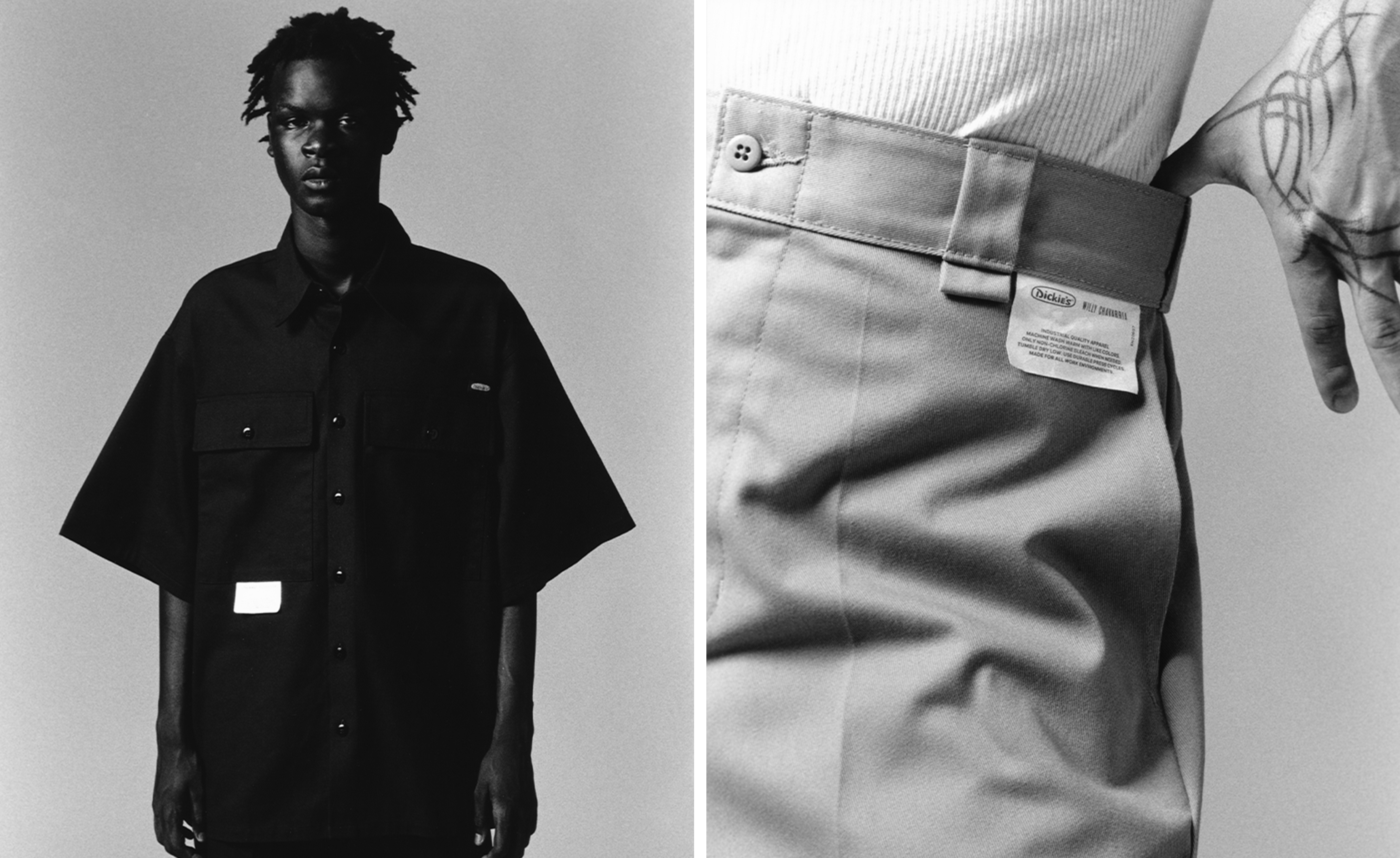 American designer Willy Chavarria on his lifelong love of Dickies
American designer Willy Chavarria on his lifelong love of DickiesFeatured in the Wallpaper* USA 300, Willy Chavarria is part of America’s new wave of fashion designers. On the launch of his collaboration with Dickies, he talks utilitarian design, authenticity, and buying his first pair of Dickies at Kmart
-
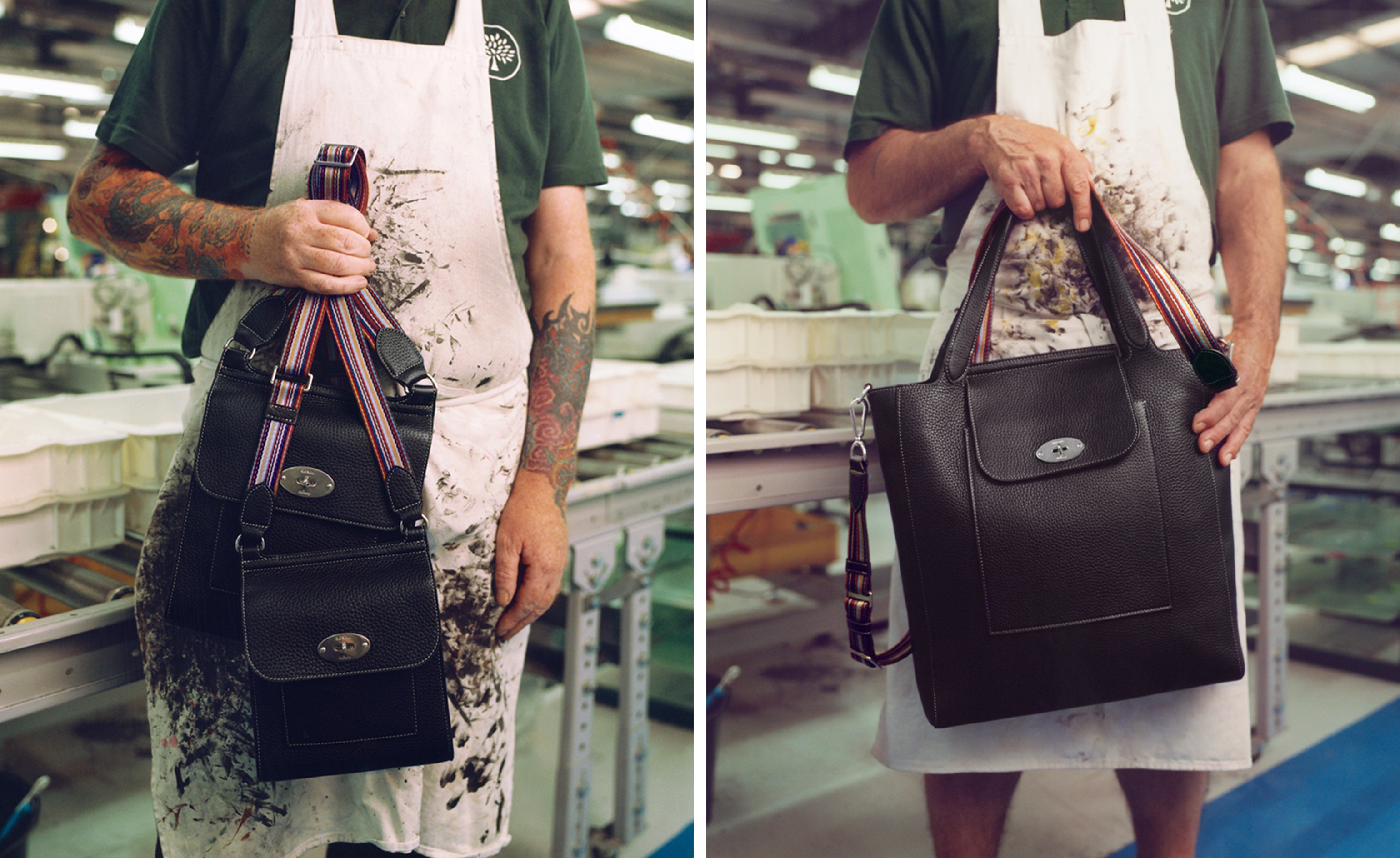 First look at Paul Smith and Mulberry’s colour-soaked bag collaboration
First look at Paul Smith and Mulberry’s colour-soaked bag collaborationBritish stalwarts Paul Smith and Mulberry have united on colourful new bags that riff on the latter’s classic ’Antony‘ messenger style
-
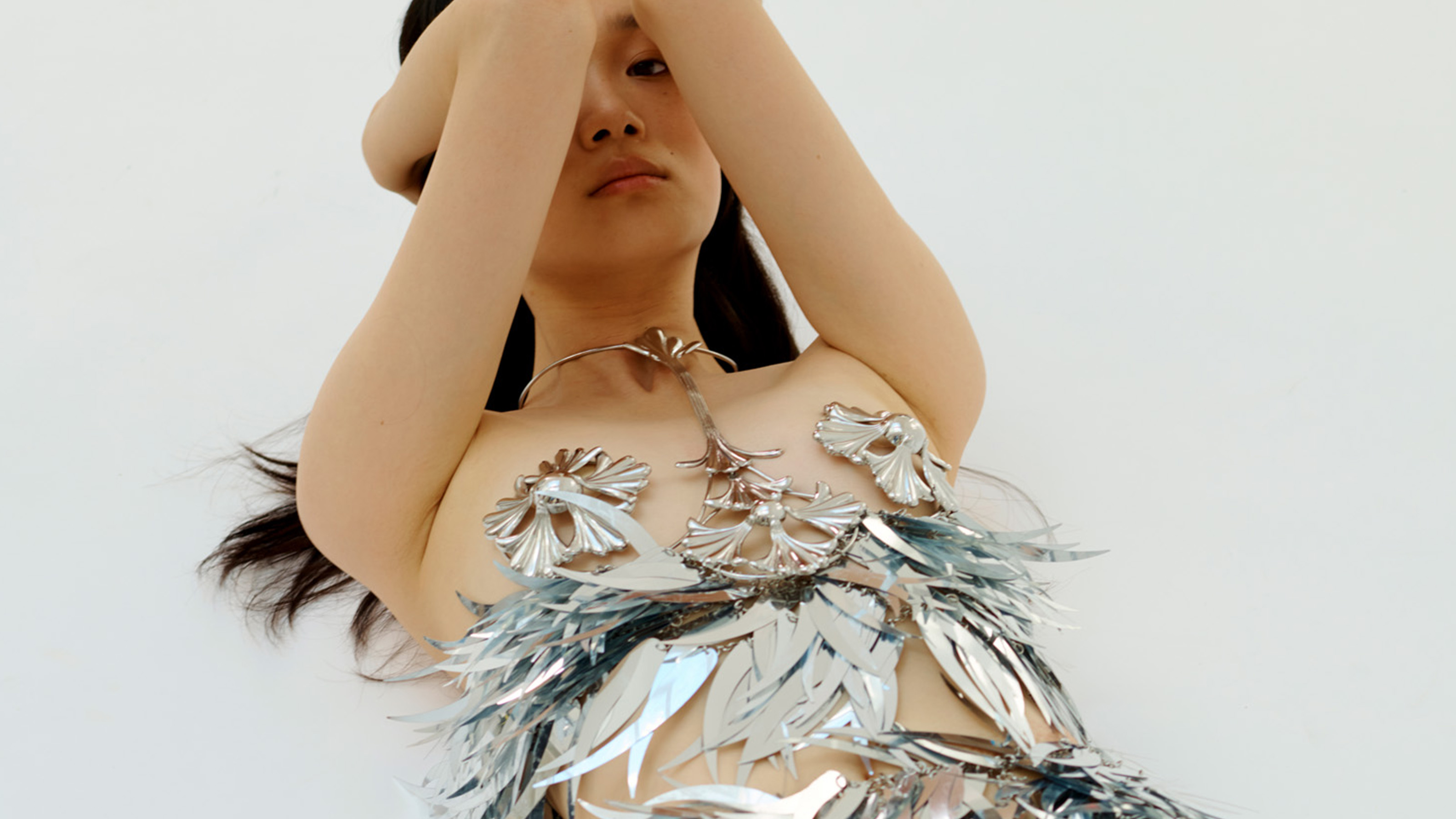 The evolution of Rabanne
The evolution of RabanneOnce known for its futuristic couture, 1960s-founded fashion house Rabanne is evolving under the creative direction of Julien Dossena, but remains true to its founder’s avant-garde legacy